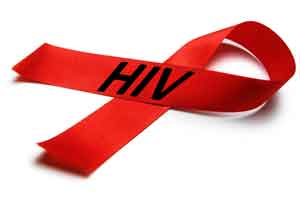- Home
- Editorial
- News
- Practice Guidelines
- Anesthesiology Guidelines
- Cancer Guidelines
- Cardiac Sciences Guidelines
- Critical Care Guidelines
- Dentistry Guidelines
- Dermatology Guidelines
- Diabetes and Endo Guidelines
- Diagnostics Guidelines
- ENT Guidelines
- Featured Practice Guidelines
- Gastroenterology Guidelines
- Geriatrics Guidelines
- Medicine Guidelines
- Nephrology Guidelines
- Neurosciences Guidelines
- Obs and Gynae Guidelines
- Ophthalmology Guidelines
- Orthopaedics Guidelines
- Paediatrics Guidelines
- Psychiatry Guidelines
- Pulmonology Guidelines
- Radiology Guidelines
- Surgery Guidelines
- Urology Guidelines
Researcher identifies a new way to treat HIV

Medical treatment that targets human proteins rather than ever-mutating viruses may one day help HIV-positive people whose bodies have built a resistance to "cocktails" currently used to keep them healthy, according to a Keck School of Medicine of USC researcher.
I-Chueh Huang has spent 13 years researching how the human immune system controls viral infections. His lab recently pinpointed a protein variant that can be targeted to prevent the human immunodeficiency virus from harming HIV-positive individuals.
"Most HIV drugs target the virus," said Huang, assistant professor of molecular microbiology and immunology at the Keck School of Medicine, which ranked No. 1 in National Institutes of Health funds received per principal investigator in 2016.
"But the virus is not stable; it always mutates problematic because the virus can become resistant to effective drugs."
The study, published in the July 3 issue of the Proceedings of the National Academy of Sciences, is a first step toward enabling doctors to direct the body's own immune system to better fend off disease. This method differs from the more traditional method of targeting viruses that may eventually become resistant to specific medical therapies.
"Much more research needs to be done, but we may have identified a new approach to treating acute HIV infection," Huang said.
About 37 million people worldwide have HIV and 20 million received antiviral therapy in 2016, according to the World Health Organization. Although most people are doing well with HIV-suppressing treatment, a growing number of people are experiencing drug resistance.
Preventing viral spread
Huang's lab previously identified a family of proteins that restrict highly contagious viruses including SARS, the flu, dengue virus and West Nile virus from viral replication at the early stage of infection.
The new study focused on HIV-1, the most widespread version worldwide. HIV can be classified into R5 and X4 viruses. R5 viruses are exclusively associated with primary infection, and X4 viruses emerge in later stages of HIV diseases in half of HIV carriers. Detection of X4 is an indication that the patient's HIV infection has progressed to a very toxic state.
The Huang Lab identified a novel variant within the previously identified family of proteins. They nicknamed it "Delta 20," an immune system protein that suppresses the most damaging HIV strains, X4, by preventing the virus from infecting cells.
"Our finding will not help develop a vaccine because the focus is on innate immunity rather than the virus," Huang said. "Perhaps one day scientists will create medicine that, like 'HIV cocktails,' have to be taken indefinitely. But the new treatment may be more effective because it is harder for viruses to escape the body's defenses."
For more details click on the link : Wan-Lin Wu, Christopher Robert Grotefend, Ming-Ting Tsai, Yi-Ling Wang, Vladimir Radic, Hyungjin Eoh, I-Chueh Huang. Δ20 IFITM2 differentially restricts X4 and R5 HIV-1. Proceedings of the National Academy of Sciences, 2017; 114 (27): 7112 DOI: 10.1073/pnas.1619640114

Disclaimer: This site is primarily intended for healthcare professionals. Any content/information on this website does not replace the advice of medical and/or health professionals and should not be construed as medical/diagnostic advice/endorsement or prescription. Use of this site is subject to our terms of use, privacy policy, advertisement policy. © 2020 Minerva Medical Treatment Pvt Ltd